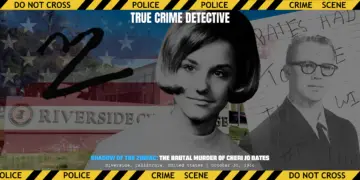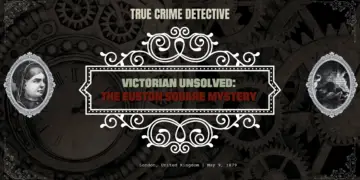
Book Review: Midnight in the Garden of Good and Evil by John Berendt
What happens when a murder mystery meets Southern Gothic eccentricity in a city as enigmatic as Savannah?
John Berendt’s Midnight in the Garden of Good and Evil defies categorisation, seamlessly blending true crime, travelogue, and character study into a rich and atmospheric tale. Set in the beguiling city of Savannah, Georgia, this book captures the essence of a place where genteel manners mask deeply rooted eccentricities, and where social hierarchies remain steadfast against the tides of change.
The story revolves around Jim Williams, a wealthy antiques dealer, and the shooting of his lover, Danny Hansford. Yet, as pivotal as the murder and subsequent trials are, the true star of this book is Savannah itself. Through Berendt’s vivid prose, the city comes alive as a character in its own right, showing the decaying beauty of the Old South where secrets flourish, traditions endure, and its inhabitants revel in their peculiarities. The descriptions of Savannah evoke a place of haunting splendour and gothic charm, a world unto itself.
Berendt’s journalistic instincts shine as he introduces a cavalcade of unforgettable personalities: the audacious drag queen Lady Chablis, the enigmatic voodoo priestess Minerva, and the peculiar inventor Luther Driggers, who carries poison potent enough to wipe out the town. Each character is rendered with sharp wit and affectionate detachment, allowing readers to marvel at their quirks without losing sight of their humanity. These larger-than-life personalities aren’t mere supporting characters; they are the beating heart of Savannah, reflecting its eccentric and insular nature.
The narrative unfolds in two distinct halves. The first is a leisurely exploration of Savannah, its idiosyncratic residents, and its unique culture. Berendt’s prose is richly descriptive, immersing readers in the city’s traditions, architecture, and unspoken rules. The second half shifts focus to the murder and Williams’ prolonged legal battles, revealing the peculiarities of Southern justice and the town’s reluctance to disrupt its social fabric. The four trials Williams endured underscore Savannah’s paradoxical blend of charm and corruption, privilege and prejudice.
The book’s structure may challenge some readers, particularly those expecting a straightforward true crime narrative. The first half’s leisurely pace and character-driven vignettes can feel meandering, but they serve to create a richly layered portrait of Savannah, enhancing the impact of the crime and its aftermath. The blending of fact and creative embellishment further blurs the line between journalism and storytelling, lending the book a novelistic quality. While some purists may question this approach, it undeniably heightens the book’s intrigue and narrative cohesion.
What sets Midnight in the Garden of Good and Evil apart is its balance of humour, mystery, and cultural insight. Berend’s sharp observations and wit infuse even the darkest moments with levity, making the book as entertaining as it is thought-provoking. Lady Chablis’ flamboyant antics, Luther Driggers’ bizarre behaviour, and Minerva’s macabre rituals provide moments of hilarity and fascination, offsetting the gravity of the murder and its legal aftermath.
Beyond its entertainment value, the book delves into deeper themes of identity, tradition, and social stratification. Savannah’s resistance to change mirrors the struggles of its characters, caught between preserving the past and embracing the future. Berendt’s exploration of justice is equally compelling, highlighting how power and privilege can shape outcomes in ways that defy fairness or logic.
Readers will come away from this book not only entertained by its eccentric characters and witty prose but also with a deeper understanding of Savannah’s unique culture and the complexities of justice and identity in the Deep South. It is a story of place and personality, of murder and tradition, and of the enduring human desire to make sense of chaos.
Decades after its publication, Midnight in the Garden of Good and Evil remains a masterful exploration of a city and its secrets. It is an ode to Savannah’s beauty, contradictions, and eccentricities, as well as a celebration of storytelling itself. Whether read for its humour, its mystery, or its richly drawn characters, this book is a journey worth taking.
Berendt’s work lingers long after the final page, a timeless masterpiece that continues to captivate readers and invite them to lose themselves in the enchanting, enigmatic world of Savannah.
The Review
Midnight in the Garden of Good
A captivating blend of true crime and Southern Gothic, Berendt’s Midnight in the Garden of Good and Evil brings Savannah to life through its eccentric characters and vivid storytelling. Centered on a murder trial, it explores identity, justice, and tradition with humour and intrigue, making it a timeless literary masterpiece.
PROS
- Rich Atmosphere
- Eccentric Characters
- Blend of Genres
- Sharp Writing
- Timeless Appeal
CONS
- Pacing Issues
- Fact vs. Fiction

























 Amazon
Amazon






















